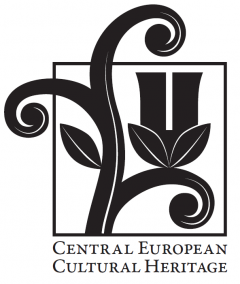The Visual World of the Hungarian Angevin Legendary by Béla Zsolt Szakács - The first volume of the Central European Cultural Heritage Series
presented by Ernő Marosi (Hungarian Academy of Sciences)
At this event, the book can be purchased by a special discount!
About the book
Dispersed in two continents, four countries and six collections; many of its pages were cropped, cut into four, or lost forever; its history, origin, commissioner and audience are obscure; still, in its fragmented state it presents fifty-eight legends on folios fully covered by miniatures, richly gilded, using only one side of the fine parchment; a luxurious codex worthy of a ruler; a unique iconographic treasury of medieval legends; one of the most significant manuscripts of the medieval Hungarian Kingdom – these are all what we call the Hungarian Angevin Legendary.
The largest part of what remained of the codex was bound in the eighteenth century in a volume in the Vatican Library. Some of the missing pages, often incomplete, have resurfaced only to disappear again throughout the world, finding their way into collections from the United States to Russia, and their common origin has only been discovered by modern research. Those, who were privileged enough in the fourteenth century to page this the codex, were probably interested in the identity of the saints they revered, their lives, and their accomplishments. For today’s observers, however, the primary role of the pages of the codex is rather to tell us how people in the fourteenth century viewed them. This book seeks to answer the emerging questions through a study of the visual program of the Hungarian Angevin Legendary.
Béla Zsolt Szakács (PhD 1998) is head of the Department of Art History at Pázmány Péter Catholic University and associate professor of the Department of Medieval Studies at CEU, also contributing to the Cultural Heritage Program. He has been active in a CEU research project focusing on the visual resources of medieval East Central Europe in the framework of which he was extensively dealing with the Hungarian Angevin Legendary. His major research fields are Christian iconography, medieval architecture in Central Europe and the history of monument protection.
Ernő Marosi (PhD 1967) is member of the Hungarian Academy of Sciences and professor emeritus at the Institute of Art History at Loránd Eötvös University of Budapest. He has been an active member of the academy since the 1970s and was awarded the Order of Merit of the Republic of Hungary, the Széchenyi Prize, and many other awards as an appreciation of his outstanding scholarly work. The main focus of his research is medieval, especially Romanesque and Gothic, architecture and art, on which he published extensively.
 About the series
About the series
The culture of Central Europe represents an entity which is much less well defined but still keenly felt by the people experiencing, enjoying, struggling, and surviving life there. This lack of clarity in cultural identity is connected to gaps in continuity resulting from the collisions of outside forces or internal struggles that which destroyed significant parts of the cultural heritage. For this reason, it is extremely relevant that an educational institution calling itself the Central European University and its press should produce a new series that presents what might be described by people in the region as their cultural heritage. We intend to bring to this series a colorful palette of tangible and intangible heritage ranging from historical monuments, to cultural landscapes, from folk music to contemporary urban art, from traditional craftsmanship to industrial sites. These large format books will display the cultural heritage of Central Europe in both words and color images designed to manifest the value of objects and ideas which may be less well known outside this region.
